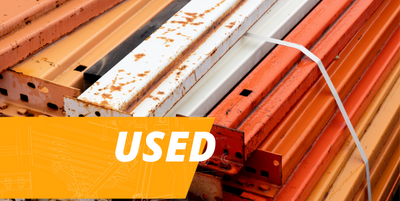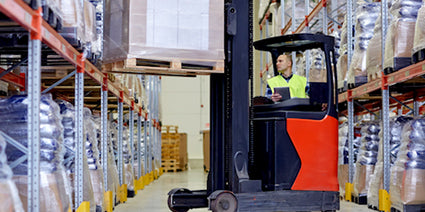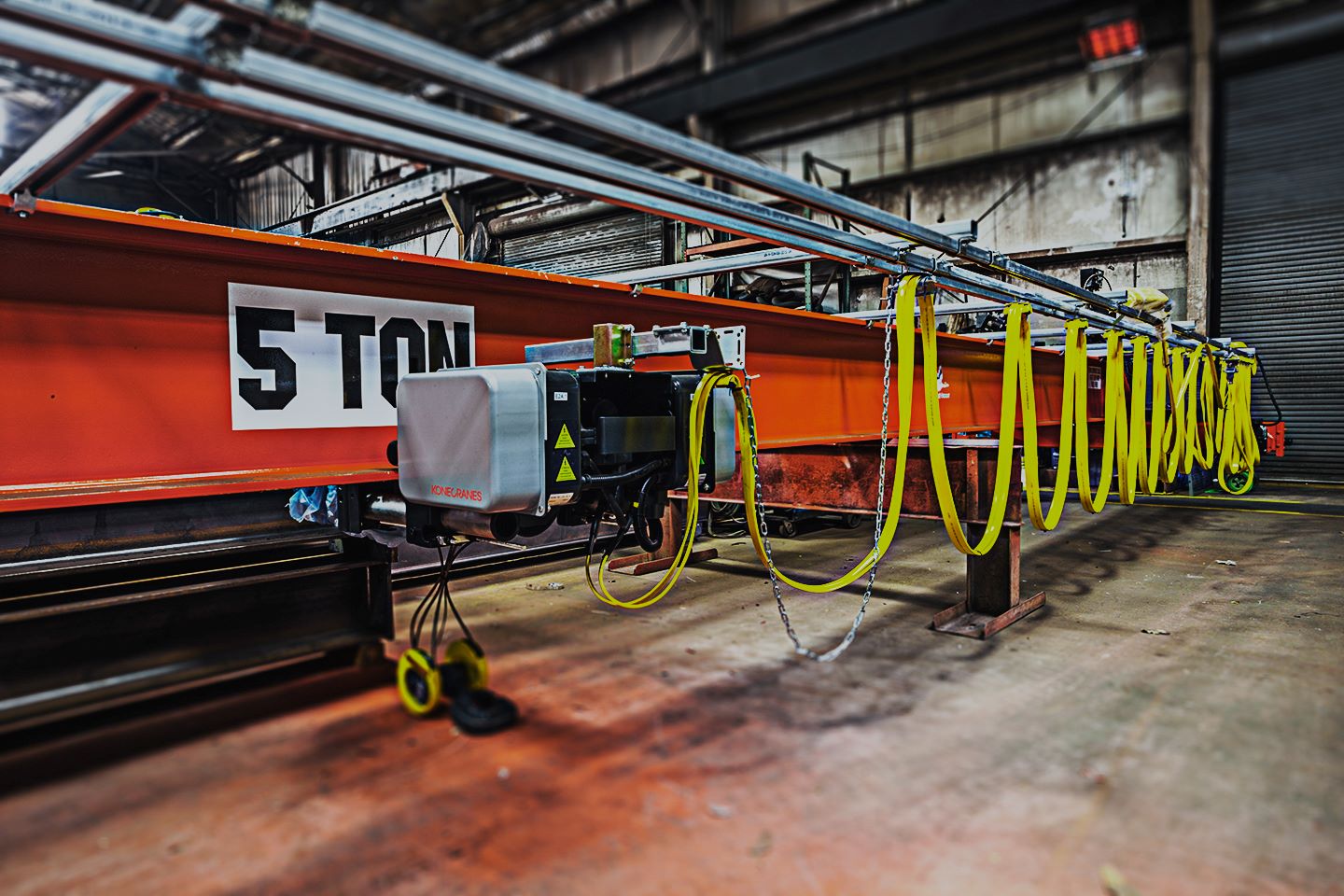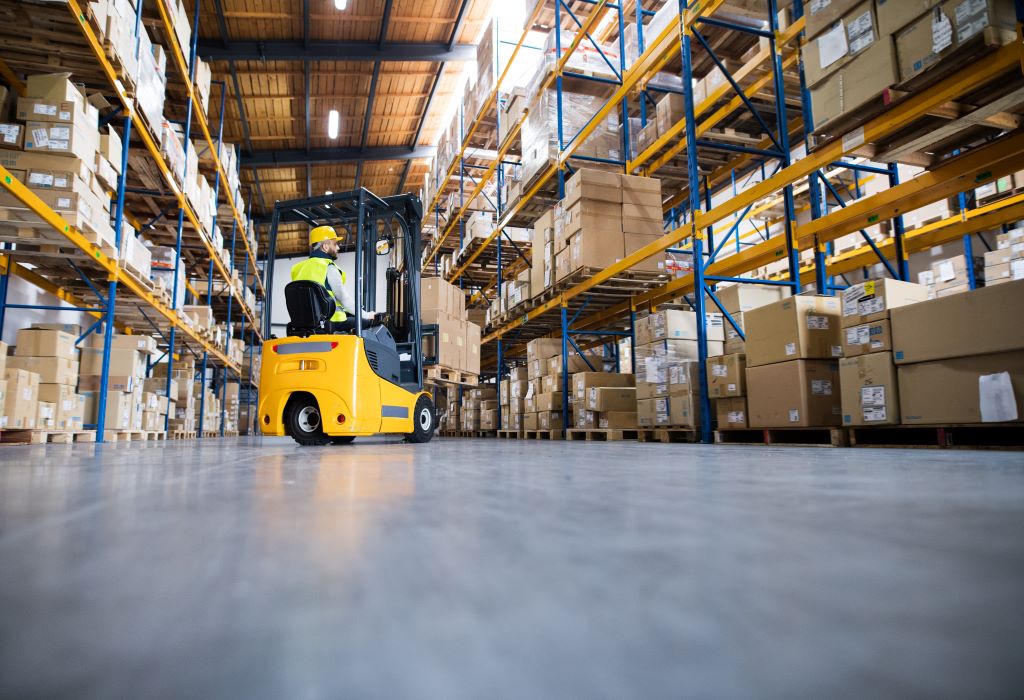Your Cart is Empty

Steel Coil Racking | Taking Advantage of Vertical Space
It wasn’t until the late 1920s that some of the first warehouses expanded vertically with pallet racking rather than horizontally. This vertical expansion was revolutionary as it increased storage density for all warehousing facilities around the world.
Originally they were made of wood, but soon as this storage method took off, businesses quickly transitioned to steel pallet racking. Steel pallet racking is easier to make, install, and can hold considerably more weight.
One of the greatest things about modern pallet racking is its ability to hold large amounts of weight! Pallet racking is incredibly versatile and is used to store everything from boxes of products to carpets to large powders.
The early racks could hold excessively heavy products such as steel coils, as seen in the image below. According tomachinemfg.com, steel coils can weigh anywhere between 15 and 30 tons per coil. Their weight makes it very difficult to store them.
Today you still see many companies storing these horizontally rather than vertically. This is why we are going to discuss the specific racking for steel coils and help anyone looking to take advantage of their vertical space and increase inventory density.

What is Coil Racking and How Does it Work?
Coil racking is custom-designed pallet racking specifically for steel coils and other similarly shaped objects. Because of its circular nature, the racking is designed to cradle each coil and firmly secure it in place. This has a dual purpose because it takes advantage of vertical storage space and helps keep the coils off the ground, where they are more easily damaged.
In typical pallet racking, you will see a wire deck that spans the width between the beams. For coil pallet racking, you will often see two steel rods that are put in place of a wire deck. This is a simple yet effective way of cradling the coils.
Due to the immense weight of each coil, the racking must be engineered by an industry professional and properly permitted before installation.
How are steel coils transported?
As always, we recommend speaking with an industry professional to determine the best method for moving and storing your steel coils. This is the best way to ensure the safety of your workers.
As mentioned earlier, these coils are massive, and their weight can range anywhere between 15 & 30 tons on average. This raises the question, how can I transport them into storage? The good news is there are various ways to move these around.
For example, the image below shows acoil ram or lifter from Vestil Manufacturing that easily slides onto the forks of a forklift. Obviously, this example can only fit smaller coils, but it is a great example of what these can look like. There are a wide variety of these types of forklift attachments that will allow for the moving of smaller coils.

What about steel coils that are heavier than standard forklift capacities? How can those be stored? Forklifts can only handle so much weight and will not work for anything that is over 16 tons for most heavy-duty forklifts.
For anything over 16 tons, you will typically need a built-in crane or a custom system to lift the heavy rolls of steel. These special cranes and systems allow for the safe movement of these large coils.
If you would like to learn more about gantry cranes and bridge cranes check out our article “Portable Gantry Cranes & Bridge Cranes.”
What are the different types of coil racks?
Of the different types of coil racks on the market today, the cradle trucks would be the lightest-duty version. This allows for the movement of smaller coils by hand. Although these cradle trucks will not work for larger coils, it’s worth mentioning that there are some light-duty options available for transporting such items.
These also work well for barrels, carpets, and other similarly shaped objects typically found in the warehouse environment.

Horizontal Floor Storage
As mentioned in the beginning of this article, it is still very common for steel coils to be stored horizontally on the floor. This creates a few advantages, the main advantage being that you do not need any special storage customizations in order to effectively store these. All you need is a crane, a wire hoist, and a “below-the-hook” attachment.
“Below-the-hook” is an industry term referring to an attachment for a hoist - much like the forklift image above has an attachment for the forks. We won’t discuss every type of below-the-hook attachment available since there are dozens of options available. However, we will show an example of what this attachment typically looks like. If you would like to browse certain styles check out these fromCaldwell Lifting Solutions.

They almost always have a “C” shape like the one in this image. The bottom of the “C” fits into the center of the coil and is then lifted up by the crane.
Steel coil racks are a great solution for many companies as they allow a business to take full advantage of their vertical space. If your forklift doesn’t have the capacity to lift the coils to their proper storage location, it can become a bit pricey to install a system that would allow for the storage of the steel rolls.
Steel Coil Summary
Steel coils are a base material for creating countless products, including pallet racking. It is easy and common to form steel coils into a multitude of shapes.
In this industry, it is generally expected that steel coils should be stored horizontally because of the immense weight of these coils. This leaves the vertical space above them open and underutilized.
However, this doesn't have to be the case. There are many great vertical storage solutions for steel coils that can safely support their weight.
As always, when dealing with storage solutions of this magnitude, it is best to speak with professionals. We can help you obtain the right system to meet your needs and get you the correct permits and engineering to ensure the safety of the system.
If you have any questions or concerns, please feel free to reach out. At Hoj Innovations, we deal with these types of storage problems frequently, and we want to help you find a solution.








